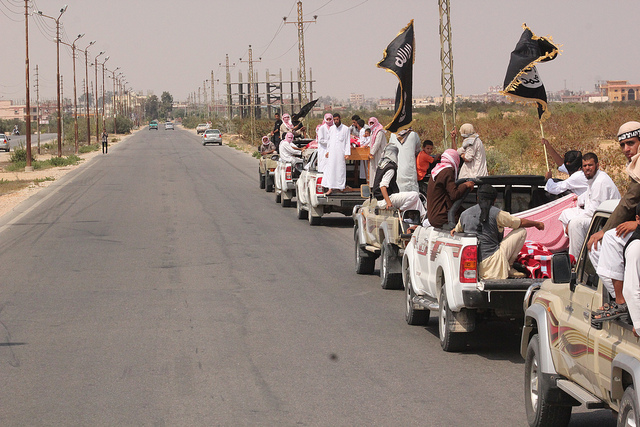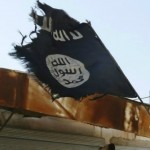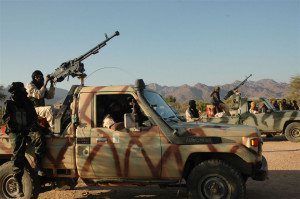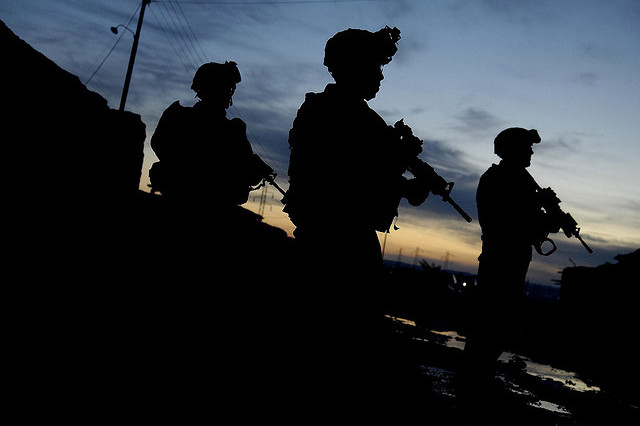by Sam Heller
A recent report from the Center for Strategic and International Studies (CSIS) has warned that the worldwide jihadist menace is more dangerous than ever. The November 2018 report, “The Evolution of the Salafi-Jihadist Threat”, estimates there may be as many as 230,000 jihadists worldwide. That is nearly four times as many as in 2001, it argues, when the 11 September attacks marked the start of the U.S.’s “Global War on Terror”.
But the report conflates jihadism with other forms of Sunni Islamist militancy and artificially inflates the number of “jihadists” in a way that’s good for headlines, but not for policymaking. What’s more, even if we posit an alternate headcount of actual jihadists – properly defined – the numbers do not tell the full story. In 2018, there are more jihadists, but more of them are fighting locally. For a U.S. audience concerned foremost with homeland security, these groups are a danger locally but not necessarily an international terrorist threat.
These distinctions are not simply academic. How we define the scope of the Salafi-jihadist problem dictates the scope of the policy response and the priority it requires in U.S. and allied foreign policy. There is no standing army of 230,000 Salafi-jihadists – or even one with the report’s low-end estimate of 100,000 – around the world. Fighting as if there were would mean a counterterrorism campaign that is unfocused, clumsy and counterproductive. Seeing “Salafi-jihadist” enemies everywhere is a recipe for an endless, unwinnable global war.
A Growing Threat?
The November CSIS report uses a dataset with numbers of Salafi-jihadist fighters, groups and attacks globally. The dataset draws on different sources, including the Global Terrorism Database at the University of Maryland, the Jane’s Terrorism and Insurgency Centre, and the Armed Conflict Location and Event Data Project.
The CSIS report estimates that there are between 100,000 and 230,000 Salafi-jihadist fighters worldwide in 2018, up from 30,000 to 60,000 in 2001. The report provides both low and high estimates for jihadist manpower, but it is the higher estimates that have captured media attention. Fighter numbers have declined slightly since 2016, the authors say, but jihadist numbers remain at “near-peak levels” since the start of their dataset.
The report argues for more U.S. efforts to address “underlying causes of terrorism”, including failures of governance and other grievances. It urges the U.S. not to focus on state adversaries such as Russia and China at the expense of counterterrorism. “The mistake would be declaring victory over terrorism too quickly”, it says, “and, as a result, shifting too many resources and too much attention away from terrorist groups when the threat remains significant”.
Confused Terminology
But the numbers in the CSIS report are questionable. The most obvious issue is that large numbers of these fighters and groups are not “Salafi-jihadist”.
According to jihadists themselves, Salafi-jihadism is a movement committed to imposing the rule of Islam through violence, but with a specifically Salafi emphasis on monotheism. That focus leads them to an expansive definition of idolatry and a readiness to excommunicate and execute Muslims they consider idol-worshippers and apostates. Critically, that includes Muslim rulers they consider “tawaghit” (false gods). Al-Qaeda and the Islamic State in Iraq and Syria (ISIS) are the most prominent examples of global Salafi-jihadism. Al-Qaeda and ISIS target the U.S. and its Western allies to rally the Muslim masses and exhaust the capacity of “Crusaders” to intervene in support of their local puppet regimes.
CSIS’s report uses an over-broad, unrecognisable definition of “Salafi-jihadist”, which it says is a group or individual who believes armed jihad is an individual duty and who is also Salafi. That definition does not capture the nature of Salafi-jihadism, or what makes the movement dangerous. Salafi-jihadism fuses borderless revolution with Salafi-inspired iconoclasm. It wants a war of all Muslims against illegitimate, idolatrous Muslim rulers and to ultimately erect a utopian Islamic state. Salafi-jihadist groups may fight on local fronts, but as part of a global war to which the West is party. Salafi-jihadism’s transnationalism, both in its worldview and operations, is what makes it a special threat to the U.S.
It’s not only Salafi-jihadists – or even only Salafis – who believe jihad is “fard ain” (an individual obligation) in certain circumstances. CSIS’s definition of “Salafi-jihadist” could easily include non-jihadist Salafis fighting a local defensive battle. In one clear example, the report counts Syrian Islamist faction Ahrar al-Sham as Salafi-jihadist. This explains the report’s implausibly high estimate of jihadists in Syria, which the authors say has the highest number of fighters of any country (between 43,650 and 70,550). Ahrar al-Sham is not Salafi-jihadist, although it emerged originally from a jihadist milieu. Its focus is Syrian and local, and it has rejected the assimilation of its Syrian struggle into a global jihadist war. It also engages regional and other governments, including the U.S.
The report also cheats by counting the Taliban, which it acknowledges is not Salafi-jihadist, but includes on the basis of its links with actual jihadists. That explains the report’s claim that South and Central Asia is the region with the highest number of jihadist fighters (between 48,000 and 104,000). Like Ahrar al-Sham, the Taliban’s war aims are local. It has diplomatically engaged foreign powers, including the U.S., Russia and others, and acknowledges the legitimacy of international institutions like the United Nations, all anathema to Salafi-jihadists.
Ahrar al-Sham and the Taliban are part of a broader and often fractious Islamist militant movement globally, of which Salafi-jihadism is only a single current. That Salafi-jihadists have cooperated or forged alliances with non-jihadist militants reflects a deliberate strategic choice by jihadists, and by al-Qaeda in particular. But labelling some erstwhile Islamist militant allies “Salafi-jihadist” makes little sense. The U.S. and its allies do not necessarily need to defeat those groups in order to defeat transnational Salafi-jihadism.
Local versus Global Jihadism
Even if we chart only numbers of actual Salafi-jihadists, however, CSIS’s longitudinal analysis of jihadist manpower is flawed.
Al-Qaeda has responded to debilitating pressure on its core since 2001 by establishing local affiliates, which merge local and transnational identitiesand largely participate in local conflicts. ISIS started as one such affiliate, a hybrid of transnationally oriented jihadism and Sunni Iraqi revanchism, although it subsequently also reproduced itself globally with “provinces” and inspired far-flung groups to raise its banner.
In the process, jihadist groups transformed from clandestine terrorist organisations to local insurgencies or aboveground armies fighting conventional wars – even briefly, in ISIS’s case, a proto-state, with its own administrative class. That mutability is a critically important feature of both al-Qaeda and ISIS, as they have moved up a ladder from tiny underground vanguards to mass organisations and back down again to smaller cells.
As these groups adapt, their numbers wax and wane depending on their current operational mode and the permissiveness of their environment. Sometimes they can stand up a mass jihadist army, as ISIS did at the height of its “Caliphate”. Sometimes they stay lean and cultivate networks of auxiliaries and sympathisers, as al-Qaeda’s leadership advised the organisation’s North African affiliate to do circa 2010 and its Syrian affiliate-to-be in 2012. These may be strategic choices, at either the transnational or local level, or they may just be opportunistic responses to conditions on the ground that have lately been conducive to jihadism.
Yes, the Salafi-jihadist movement has dramatically increased in numbers since 2001. Jihadists’ sheer numbers and geographic spread are obviously a problem. But how much of a problem, and for whom, is debatable. How, for example, do we assess the threat posed by thousands of local soldiers who have enlisted circumstantially under a veteran jihadist core? Or that posed by the marginal jihadist, the last to join any group and, were conditions to change, likely the first to leave?
Jihadist leaders are intensely conscious of how they align themselves with local causes and secure broader popular support. Meanwhile, the motivations of many of their rank and file are likely local, even if they fight in jihadists’ ranks. The CSIS report warns repeatedly of a global “pool of Salafi-jihadists” that threatens Western countries and their allies. But to what extent are jihadists’ local soldiers indoctrinated and socialised into the Salafi-jihadist movement? How confidently can we know the motivations of Somalis fighting in Somalia? Former al-Qaeda affiliate Hei’at Tahrir al-Sham’s fighters include teenagers who grew up during the country’s war, and who may have never left Idlib governorate or its adjacent areas. These men are not roving transnational terrorists, at least not yet. Their profiles and motivations will necessarily differ from lifelong jihadist operatives.
Of course, there are reasons to be concerned about even more locally occupied jihadists. Jihadist manpower may be a sort of proxy measure for jihadists’ broader appeal, and even purely local fighters may be the basis for future dispersed networks and transnational mobilisation. For those concerned about international terrorism – what jihadists themselves call “external operations” – a mass force that is locally manned and motivated could potentially harbour or incubate an international terrorist capability. Al-Qaeda’s Algerian command apparentlyconsidered doing so in Mali circa 2012. Or, to take another example, an Idlib controlled by tens of thousands of miscellaneous local militants could provide space and resources for a half-dozen transnationally-minded “Khorasan Group” members to plot.
But it is these tiny, Khorasan Group-like cadres that seem most comparable to 2001-era al-Qaeda jihadists. An itinerant al-Qaeda operative circa 2001 is simply a different thing than an ISIS conscript in Mosul. One-to-one comparisons of Salafi-jihadist headcounts between 2001 and 2018 do not make sense.
Today’s more locally focused fighters may be less alarming for the West while posing an even deadlier threat to local enemies. For those locals, now grappling with jihadist-tinged insurgency and civil war, these groups’ numbers are important. But for the U.S. and other outsiders mostly concerned about external operations, the measure of the threat is these groups’ intent, capability and coordination. On those measures, estimates of raw manpower provide limited insight.
Counterterrorism Report Card
Some media have portrayed the CSIS report’s estimates as evidence of the failure of U.S. counterterrorism policy since 2001. Yet we ought to be cautious about the conclusions we draw from the multiplication of jihadists worldwide, and what it says about counterterrorism specifically.
The numerical growth of jihadists globally is largely the result of the U.S. invasion of Iraq and the Arab Spring and its aftermath. (Jihadists themselves admit that they were in dire straits before the deus ex machina of the Iraq war.) Both events weakened or destroyed Middle Eastern states, creating vacuums for jihadists to opportunistically fill and spreading arms and instability.
As Crisis Group has argued, jihadists rarely start wars, or even have much agency in the conflicts in which they participate. More often, they seize opportunistically on violence and war driven by factors mostly unrelated to jihadism, even if jihadists subsequently exacerbate conflict and make it more difficult to resolve.
Oppressive politics and social and demographic stresses partly account for the national upheavals in the Middle East and North Africa. But the decisions of the U.S. and its allies to invade Iraq, topple Libyan leader Muammar Qadhafi, and pour weapons into the Syrian rebellion clearly played a role. These decisions were not primarily about counterterrorism, even when framed as such. The spread of jihadism is less about the failure of counterterrorism per se and more about wider geopolitical trends and U.S. policy writ large, particularly those policies that have contributed toward fracturing states and disrupting local societies.
While there are more jihadists since 2001, they are also qualitatively different. Combining all jihadists into a few huge numbers may be alarming. But smart counterterrorism policy cannot treat jihadists as an impossibly large, undifferentiated “pool”, or fail to account for how jihadism has changed over time. Counting jihadists’ local cannon fodder the same way we count veteran jihadists who have traditionally served as nodes in transnational networks is unhelpful. Nor should we exaggerate jihadists’ strength by declaring local, non-jihadist militants part of the global Salafi-jihadist threat.
Since 2001, we’ve seen how ill-considered policy has expanded jihadists’ capabilities and reach globally. The Salafi-jihadist threat requires a discriminating policy response, premised on the complexities of jihadist groups and their local context. Eye-popping, inaccurate estimates of jihadist strength work against the complex, informed solutions that keep people safe.
Sam Heller is Crisis Group’s Senior Analyst on Non-State Armed Groups, as part of the organisation’s work on Jihad in Modern Conflict. He joined Crisis Group in February 2018 and is based in Beirut.
Republished, with permission, from the International Crisis Group.






Wondering how always the military intervention is being preferred to cutting the financial aids to such organizations which is a much easier task! They needed a tremendous money to run ISIS and gather the required armaments to a real army. Apparently, they didn’t achieve it by gathering the guns from the ground in Iraq!